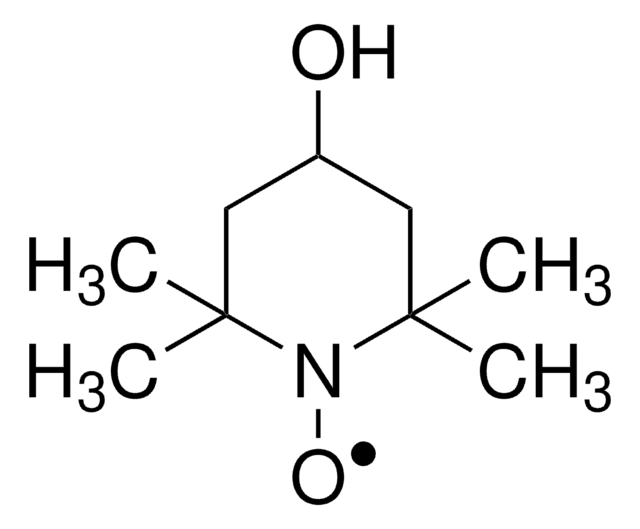T7024
N,N,N′,N′-Tetramethylethylenediamine
BioReagent, for molecular biology, ≥99% (GC)
Synonyme(s) :
1,2-Bis(dimethylamino)ethane, TEMED, TMEDA
About This Item
Produits recommandés
Qualité
for molecular biology
Niveau de qualité
Gamme de produits
BioReagent
Pureté
≥99% (GC)
Limite d'explosivité
9.08 %
Indice de réfraction
n20/D 1.4179 (lit.)
Point d'ébullition
120-122 °C (lit.)
Pf
−55 °C (lit.)
Densité
0.775 g/mL at 20 °C (lit.)
Activité étrangère
DNase, RNase, protease, none detected
Chaîne SMILES
CN(C)CCN(C)C
InChI
1S/C6H16N2/c1-7(2)5-6-8(3)4/h5-6H2,1-4H3
Clé InChI
KWYHDKDOAIKMQN-UHFFFAOYSA-N
Vous recherchez des produits similaires ? Visite Guide de comparaison des produits
Application
TEMED is a tertiary amine that is used to catalyze the formation of free radicals from ammonium persulfate or riboflavin. TEMED-generated free radicals cause the compounds acrylamide and bis-acrylamide to polymerize and form the gel matrix polyacrylamide. Because TEMED is functional only in its free base form, low pH conditions will inhibit polymerization.,,
The potential contribution of TEMED to elevated background in silver stained SDS PAGE has been studied. TEMED has been used in the coating of soft polymers, such as polyacrylamide, in capillaries for investigation by atomic force microscopy. Microchips containing oligonucleotides and proteins immobilized within gel pads have been prepared using TEMED.
The capillary isoelectric focusing of proteins with an isoelectric point (pI) > 12 has been investigated through the use of TEMED. TEMED has been used in the HPLC of small organic molecules.
Quantité
Mention d'avertissement
Danger
Mentions de danger
Classification des risques
Acute Tox. 3 Inhalation - Acute Tox. 4 Oral - Eye Dam. 1 - Flam. Liq. 2 - Skin Corr. 1B
Code de la classe de stockage
3 - Flammable liquids
Classe de danger pour l'eau (WGK)
WGK 1
Point d'éclair (°F)
61.7 °F - closed cup
Point d'éclair (°C)
16.5 °C - closed cup
Équipement de protection individuelle
Faceshields, Gloves, Goggles, type ABEK (EN14387) respirator filter
Certificats d'analyse (COA)
Recherchez un Certificats d'analyse (COA) en saisissant le numéro de lot du produit. Les numéros de lot figurent sur l'étiquette du produit après les mots "Lot" ou "Batch".
Déjà en possession de ce produit ?
Retrouvez la documentation relative aux produits que vous avez récemment achetés dans la Bibliothèque de documents.
Les clients ont également consulté
Notre équipe de scientifiques dispose d'une expérience dans tous les secteurs de la recherche, notamment en sciences de la vie, science des matériaux, synthèse chimique, chromatographie, analyse et dans de nombreux autres domaines..
Contacter notre Service technique









